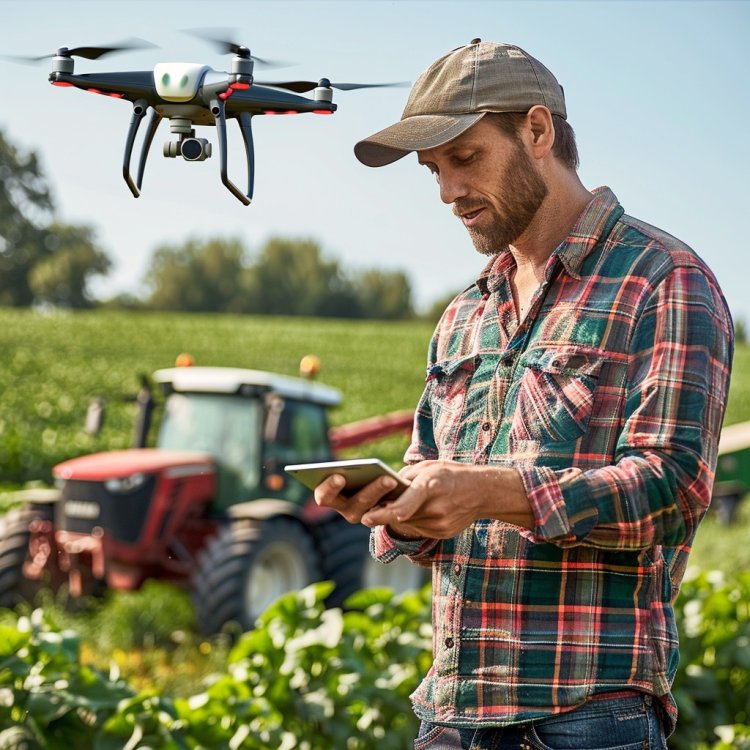Artificial Intelligence in Agriculture: Revolutionizing Farming for a Smarter Future
Explore how Artificial Intelligence is transforming agriculture through precision farming, predictive analytics, smart irrigation, and automation. Discover why AI is the future of sustainable farming.

The agricultural world is undergoing a digital revolution — and Artificial Intelligence (AI) is at its core.
What is AI in Agriculture?
AI in agriculture refers to the use of smart algorithms, robotics, and machine learning to improve farming practices, productivity, and decision-making. It helps farmers monitor crops, predict weather patterns, optimize irrigation, manage supply chains, and even automate harvests. Learn more

a farmer working smartly, with AI.
How AI is Changing Farming:
- Precision Farming: AI systems analyze soil conditions, crop health, and environmental factors to guide farmers on when, where, and how to plant or irrigate.
- Smart Irrigation: AI-powered irrigation systems monitor soil moisture and weather forecasts to deliver just the right amount of water — saving millions of liters annually.
- Crop Health Monitoring: Drones and AI tools can scan vast fields and detect diseases or nutrient deficiencies early, saving crops and maximizing yields.
- Yield Prediction: Predictive models forecast harvest outputs based on real-time data, helping farmers plan better and reduce losses.
- Autonomous Machinery: Self-driving tractors, robotic planters, and harvesters are already increasing efficiency and lowering operational costs.
Benefits of AI in Agriculture:
- Increased crop productivity
- Reduced water and chemical usage
- Early detection of diseases and pests
- Lower labor costs
- Better climate change resilience

AI the future of Greenleaf Farmstead....
The Future with AI:
With the global population projected to reach 9.7 billion by 2050, AI will be critical to feeding the world sustainably and efficiently.
At Greenleaf Farmstead, we are committed to embracing innovation. Our vision includes integrating AI technologies to boost farm output, optimize resource use, and deliver premium-quality agricultural products.
The future is now — and it's smart.
What's Your Reaction?





















